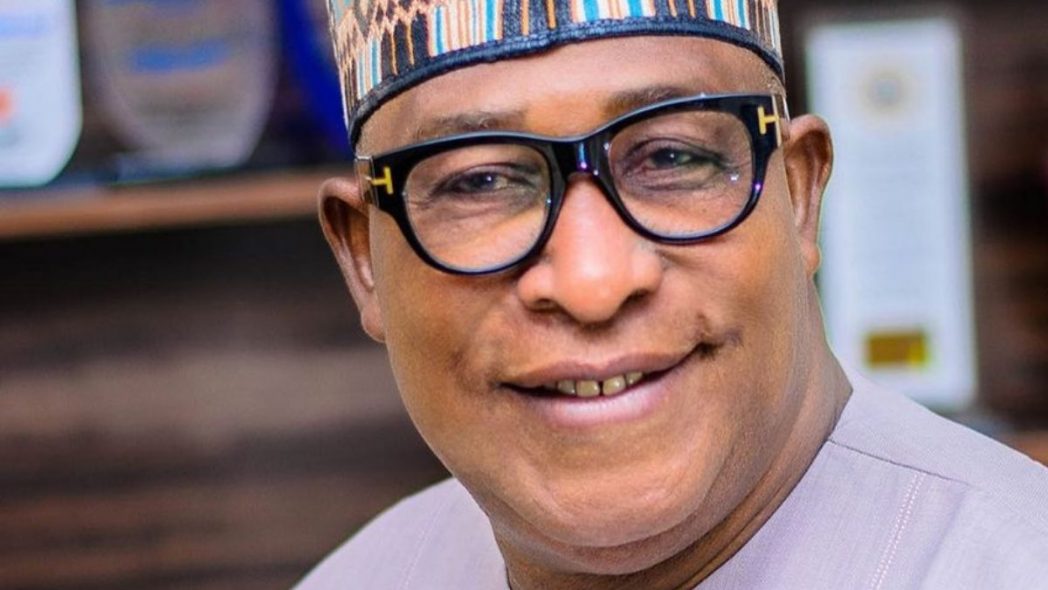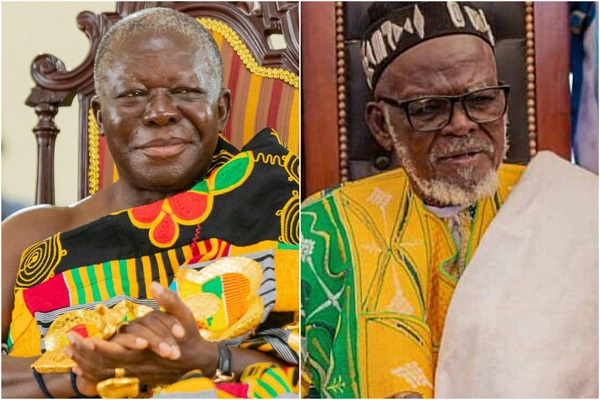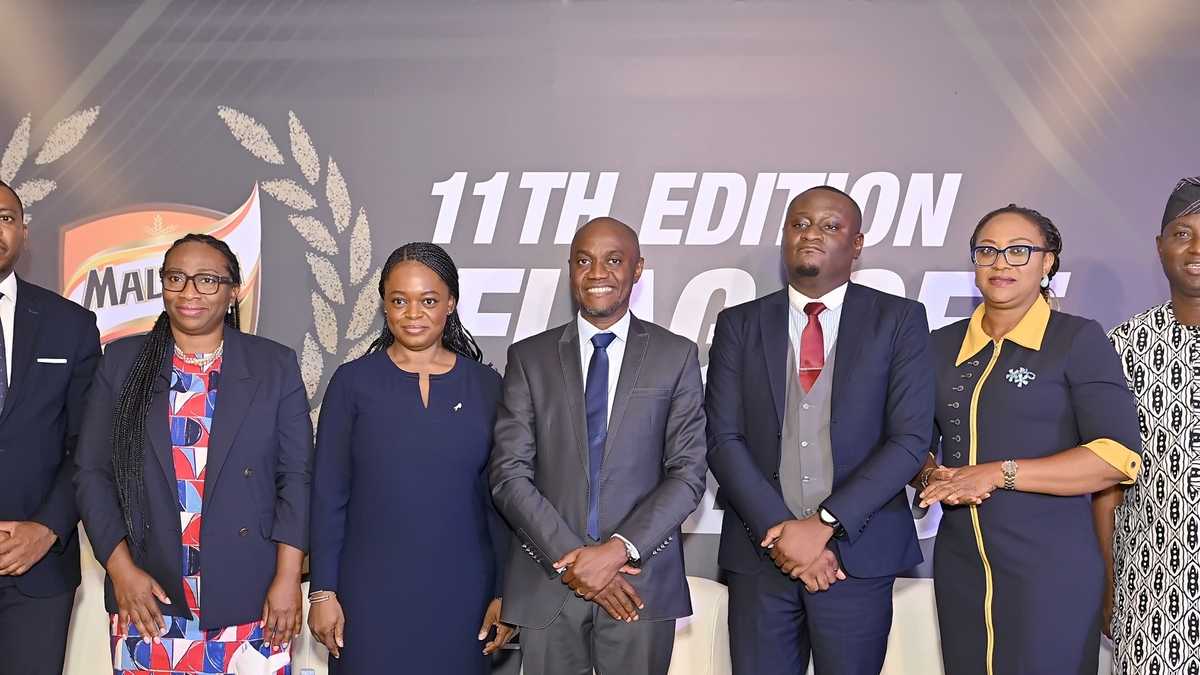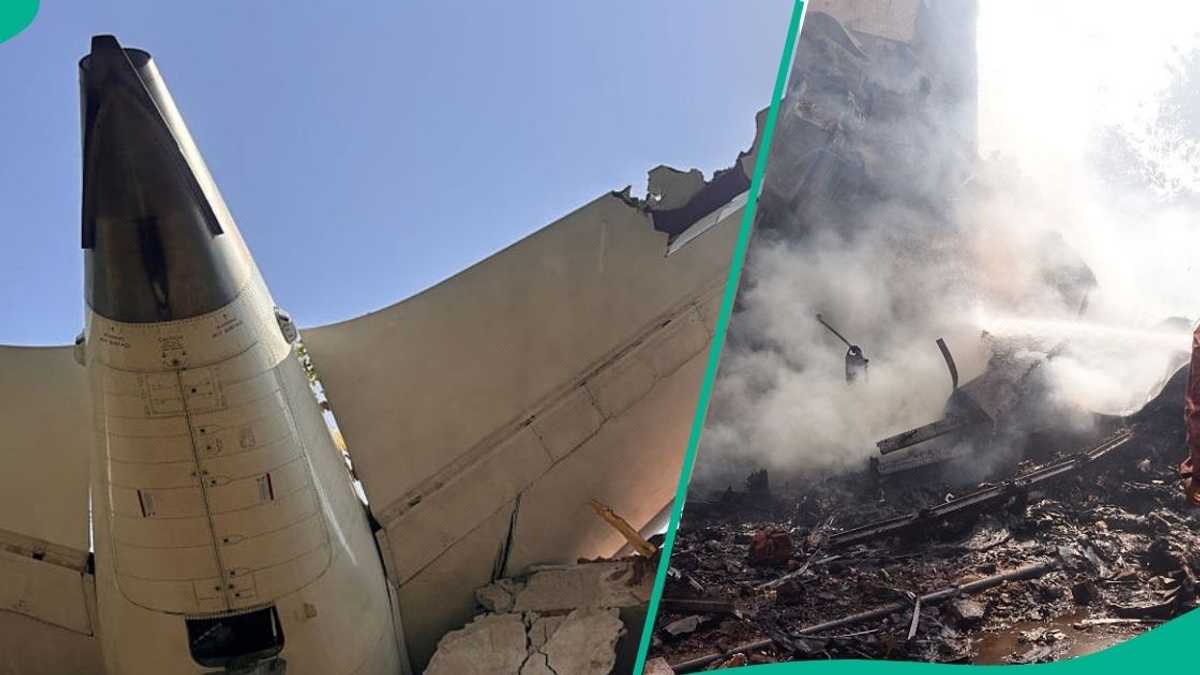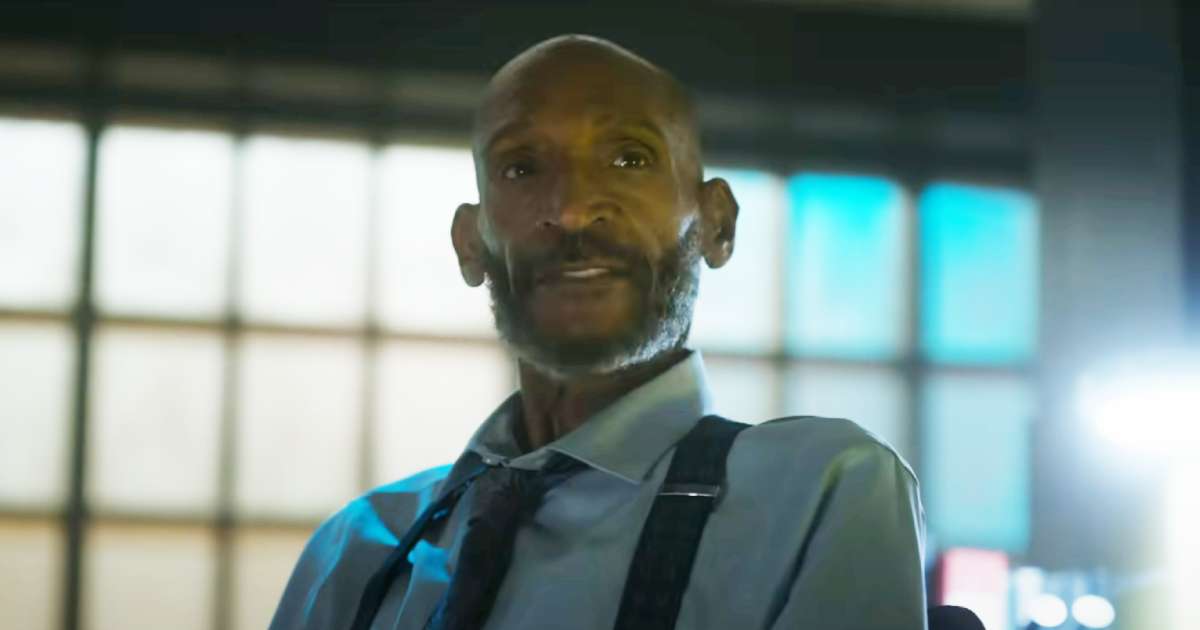Blending Retail and Innovation: A Conversation With Troy Rice, CEO of Total Wine & More
In this insightful interview hosted by Harvard Data Science Review’s Founding Editor-in-Chief, Xiao-Li Meng, and Media Feature Editor, Liberty Vittert, Troy Rice, CEO of Total Wine & More, discusses his career trajectory from an assistant manager at a retail store to leading a major retail beverage chain. He highlights the influence of early frontline retail experiences on his customer-centric leadership style and approach to leveraging data in corporate strategy. Rice details how Total Wine has embraced data-driven decision-making, primarily through building an enterprise data warehouse and employing AI and machine learning to enhance customer personalization, supply chain forecasting, and digital engagement. He emphasizes the importance of blending brick-and-mortar presence with e-commerce strategies to maintain a personal touch with customers. Throughout the conversation, lessons are shared on integrating data science within business processes and adapting to evolving consumer preferences amidst rapid industry innovation. Rice also underscores the critical role of maintaining open feedback channels for effective leadership and the potential of AI to revolutionize personalized marketing. The interview concludes with a reflection on the future challenges and opportunities in the retail space, particularly in achieving agility and innovation in response to changing market dynamics.
HDSR includes both an audio recording and written transcript of the interview below. The transcript that appears below has been edited for purposes of grammar and clarity with approval from all contributors.
Audio recording of the interview.
[00:00:00] Well, thank you, Troy, for joining us. Before we get started, I want to thank you again for attending the fifth anniversary HDSR celebration, the Vine to Mind event, and for your fantastic presentation there. In order to share your wisdom and your experience with the broader audience today, we like to conduct this conversation with leaders. And speaking of leaders, I want to start with a question about your early career. I understand that your career began as an assistant manager at Home Depot, a role that is very much on the frontline of retail. How did those early experiences in a consumer-oriented environment shape your leadership style and influence the way you approach your role as CEO of Total Wine? And particularly, how did these early experiences influence your belief in using data—and how that could be incorporated later?
[00:00:54] Well thank you. Thanks a lot, I appreciate it. And thanks for having me here. I enjoyed the conference. I had a great time there getting to meet everyone. And thanks for the opening question.
[00:01:05] So yes, I started my retail career in earnest with The Home Depot in their first management training program. For me, the way it really impacted me as a leader was caring so much about the customer and focusing in on a level of service that just surpassed what anyone else would deliver in our space, and being really experts at your category that you’re in. So, whether I was running garden department or whether I was running the plumbing department or whatever it may be, we were supposed to be experts in our space. We had to really invest our time upfront to do so.
[00:01:47] Part of that was how we used data at that time. So Home Depot really was founded in 1982, I believe, so in 1990 they had grown quite a bit. They were obviously behind Walmart with what Walmart was doing from a data and logistics standpoint, but they were rapidly investing in the tools they were giving their stores to run their business. The business is very decentralized, and as such, stores order their own inventory. It was shipped direct from suppliers to the store. And one of the things that that they really trained us on in the early days was how to order effectively, how to use your data on what’s selling, how much inventory you should keep on hand from a safety stock, what we called in those days ‘job lot quantities,’ meaning that if I’m a contractor coming in and I’m going to be replacing doors in a house, I need at least eight doors. So, you need to have that as a starting point to what you're ordering. It really made me think a lot. And I carry those things with me to today as I’m thinking about safety stock, as I’m thinking about spike inventory sales, as I’m thinking about uniqueness in product categories and how you stay relevant to that local market. It was a great experience, and I’ve carried so many of those learnings with me to this day.
[00:03:22] You know, going on that thread from sort of the beginning to right now, Total Wine has really seen sort of remarkable growth under your leadership. What sort of strategies or innovations, especially in data science, have been most critical in sustaining and cultivating the future of the growth of Total Wine?
[00:03:42] Well, it’s a current topic we talk about all the time. And, you know, we’ve done a couple of things that have been very important, and I wish I could say these were all my ideas, but they are definitely not. We have some great people that are thinking about this all the time, and I think that one of the first things that we started to do—this would have been roughly 6 years ago—was to start to build an enterprise data warehouse. And so we started building all of our customer data in this data warehouse, and it allowed us to take all the purchasing history on every customer that shops at our stores, that are in our loyalty program, and build a history on what they were buying in our stores so that we could actually begin offering personalized promotions. And this has been a key part of what we’ve done.
[00:04:37] So customers want to have a relationship with a retailer, with any company, and if they believe that you really know them and care about them, it means a lot more to them and they’re much more highly engaged. We’ve been going down this road of personalized promotions for the past 4 years, and over the course of really a 2-year span, we went from mass promotions and mass offers to 90% of what we do today are personalized offers. And that plays out in email, it plays out on the website, it plays out in digital content, and how we market to our customers as well. We’re able to take those items that they have a passion, an affinity about and have an ongoing dialog with them, whether it be through product features or promotions that we can offer to them.
[00:05:31] I think the second big thing has been how we understand our customers better. We’ve been able to hire data scientists in the company that have been able to stand up the methodology in using machine learning and AI to track customers’ behavior so that we can track their frequency, what they’re buying in between purchases if they’re a primary category, so that we can then have that dialog with them of relevancy in between those purchases. It allows us then to drive CRM [customer relationship management] at scale.
[00:06:08] And I think the third thing is the data usage. Data science has allowed us to have much, much better forecast. I just left a meeting earlier today where we are leveraging AI in our demand planning through a tool called o9. But that is allowing us to do demand planning, replenishment planning, and then financial planning and at a much, much more precise manner than we have in the past at a location level. So, we’ve been doing so much work around this. And as the old saying goes, we are in the early, early innings of this, but it is moving really at warp speed right now. I mean, we just started just a planning project about a year ago, and to see this coming to life now with three major things that are happening on Monday, you know, is rewarding to see.
[00:07:12] Well, as data scientists, we’re obviously very happy to hear how data and data science are being used. But at the same time, you know, I’m an academic data scientist, and I know that trying to get them done and really implement them in industry is a different story. It’s very different than writing an article about it. And I’m sure you have lessons and insights to share with others in terms of building such a process, because I don’t think that’s an easy one. So can you share a little bit with our audience the kinds of lessons and insights you have learned to do this well?
: [00:07:45] Yes. It’s definitely been a journey for us. I think what we’ve learned was that setting up the proper investment upfront with data structure is so important. If you think about that, why it’s so important, no matter how good the tool is, poor structure leads to poor output. And so if you think about our product data structure, which is one of the realms that we are focused on—that has been built over 15 years, while our customer data has been built over the course of the past 5 years.
[00:08:21] And so we started using all these tools on the customer data first, while in parallel been building a road map to cleanse and map and evolve the product data so that that would all come together into a location, product, and customer. Where they overlap, we’re able to start effectively using that data. I think a good example of that is probably the Ketel One customer today, premium European vodka. Those customers typically love to buy Sancerre. In the future, we would like to be able to leverage that data to connect the product information to them, to speak to them more about how they like other crisp white wines, to help them explore those categories.
[00:09:14] So this process has been very iterative and many, many small steps to try to get there. I think the other thing I would say with that is to be very patient. I definitely would like to see more output, but the learnings come in small, small steps. It seems today that the machines learn off the small changes in data, and as we’ve seen those improvements, we’ve seen much better results with that. So, build your structure right, connect the different aspects of your data location, be patient, and prepare for small steps.
[00:09:57] Troy, you touched on it a little bit, but just to go in a little bit more depth—what does the data team really look like at Total Wine? Do you hire people in? Do you have your own training? What is the scope of the data team and how is it integrated into the rest of the company?
[00:10:15] Well, it’s a great question. It’s one, you know, quite frankly, we’re still asking ourselves what is the right structure for this? We have built a centralized data and data science team that’s responsible for combining data across the organization, so that we have one single version of the truth. That's always a good thing to have. That team is responsible for developing our predictive AI and machine learning models, and they’re using Google tools to do this today. So we have that team really spearheading a lot of the heavy lifting that we have, but we also have teams embedded within each group as well. Our marketing team has a small but mighty team focused on personalization, working with the centralized data management team to provide the right offers to those customers, and then using the marketing team to get that out to our customers.
[00:11:20] So there has been a lot of learning that we’ve had to do internally about how to optimize how the teams work together. I’m looking at how we can continue adding to the data science team, because it seems like I’m getting a very high ROI [return on investment] out of the additional investments that I’m making. It is one of those things about how deep and how big do you go? We’ve tried to manage that by keeping everyone engaged. We have certain leaders that are on our data science and analytics governance council. So, we have built that, and that has helped us be able to have a steering committee, if you will, and alignment within the company about what we’re working on, the prioritization, and ensure that we’re measuring the proper ROI.
[00:12:09] I would say the other thing we’ve definitely learned is that it is very easy to overload this team, because everyone is seeing the benefits they can get out of this team. And so being able to manage that appropriately has been very challenging. It’s tough to tell someone that you really can’t work on their project right now, but that’s just the reality of the world, number one, and number two, as we are growing and developing what we’re doing.
[00:12:41] Well, don’t say too loudly you’re looking for more data scientists, because all of a sudden, all of our listeners are going to be gone. [Laughing.] Here you go, advertising for free!
[00:12:47] Oh, no. That’s the whole purpose—what are you talking about, Liberty? We want to include more people out there at the forefront of data science. Right, but Troy, you mentioned something which was really incredibly important. You said that everybody wants these data scientists to do many things.
[00:13:05] Right.
[00:13:06] As you said, there’s still a learning process. And I remember during the conference, you talked about the importance of being comfortable with receiving feedback. So can you share a piece of feedback or advise that significantly influenced your leadership style and approach to running a company?
[00:13:21] Well, you know, I think that it does go back to the early days at Home Depot, because Bernie Marcus would always tell us as leaders that you can’t believe your own BS. [Laughing.] And he would always go in and he would have what you would call a town hall meeting, and he would do it with just himself and hourly employees, and he would ask them what’s really going on, what’s happening in that store, what customers are saying. Then he would come back and share that.
[00:13:57] So, I combined that type of background and understanding with, I think, some masters in talking to leaders about what you need to do as a leader. And the one person that I have always remembered his talk is Marshall Goldsmith. And his whole thing was, look, as you become a CEO, your jokes are going to get funnier, you’re going to look better, you’re going to get smarter all of a sudden—and none of it’s true. It's all about the fact that you have to fight very hard to find out the truth.
[00:14:33] So, for me, I try to do that with my own team in the store support center when I’m here. When I’m out in stores, I try to have town hall meetings. I try to solicit good feedback on what we can do better. This year, I’ve had a town hall meeting with probably 50 store managers across the country in different markets and getting feedback on things that matter. It gives me a chance to talk about the culture that I want to build and that we want to build at Total Wine.
[00:15:06] And it’s very important, I think, to be able to listen and get that feedback and take it very seriously. So what we always try to do is to then get back with those teams on those points of feedback and tell them, ‘Hey, you spoke, we listened, and this is what we’re doing differently.’ And we just recently did this with the entire management team in Minneapolis. We have 10 stores in the state, and I was at a town hall, we took all the notes, and then we got on a conference call and told them we’re making these changes because of what you told us.
[00:15:37] I just encourage every leader that we have to do this on every single visit. It’s just so important as a leader that you do not let filters be built—because they’re going to be built. So that’s my approach on it.
[00:15:51] Thank you. Let me just jump in. From the data science perspective, what you’re saying is collect your own raw data, don’t let others preprocess data for you. That’s the important lesson here.
[00:16:04] That’s exactly right.
[00:16:05] Given someone, and especially Total Wine, which like a whole lot of companies has sort of traditionally been retail business in stores, how do you balance and what is the future of balancing brick-and-mortar presence with embracing e-commerce and the data analytics or the extra data analytics that come with something like that?
[00:16:29] Yeah, I got to say it’s a huge discussion and challenge. We have always said we want to make the best shopping experience possible for our customer and enable their shopping experience in our category. And we’ve invested heavily in the digital business and we’ve invested heavily in our brick-and-mortar business. Brick-and-mortar is still our number one capital investment that we have as a company. Digital is right behind that.
[00:16:59] And if you think about how customers are shopping today, the data points that we have are that 65% of the customers start their shopping experience online. That’s in our space. About 70% of those sells happen in the store. So they start online, they come in the store. We’re about an 18% digital penetration right now. Of that 18% penetration, about 4% of that today is done through Marketplace, Instacart, DoorDash, Uber Eats. So the rest of it is done through curbside, delivery, and in-store pickup today. Every digital order that’s fulfilled out of our company is done through the store. We don’t have warehouses to ship from, so we have to invest heavily to help us facilitate the amount of orders that we’re doing. Some of our stores will do 600 orders a week, 700 orders a week.
[00:18:04] We will do a lot in our business, and it’s about that balance of having a great shopping experience in store and having a great shopping experience digitally, because for most customers, it’s the same customer. It’s just about the occasion. And the example that I always like to give is that for a family unit, it may be that the mom or the dad is very busy that week. They’re out running the kids around to practice, they need to swing by Total Wine to pick up something, they order wine while they’re at practice on their app, and then they swing by the store to curbside order. We will have that in your trunk within 3 minutes of you pulling up in the spot. We measure that. That could be on a Thursday. On Saturday, the dad or mom may want to come in and spend 20 minutes shopping the bourbon or scotch aisle. And it is very much different shopping occasions. And then there’s just, ‘Hey, I need something quick.’ We’ll do a delivery and we’ll get it out there to you quickly.
[00:19:14] The beautiful thing that digital analytics does, as you all know, is it really lets us learn more about the customer, their shopping patterns, what they buy together, what they are searching for, and then how they actually buy when they come in the store. And another data point that I like to share is that about 80% of our customers today will actually use the app in the store. It just shows you how all of this blends together.
[00:19:44] For us, we think it makes a better shopping experience because I can research online, I can read stories online, I can learn about certain parts of Italy or France online and hear producer stories. So we think it’s definitely a differentiator. We believe it’s a strength of ours. Right now we have the number one share in the digital space in the country in Bev Alc. So we’re going to keep leaning into it, and hopefully customers will continue to like what we’re doing.
[00:20:21] Well thank you, Troy. Your mentioning of Italy and France reminds me of something I’ve been thinking about, since I love wine too, as you know. I think among all consumer products, wine is one of the few products that are truly international, right? It’s very rare somebody demands the whole store has to be made in America or made in China—it doesn’t work, right? For any good wine store that we go in, everybody would look for wine from different regions. I couldn’t think of too many other products have that feature to it. So the question I have for you is how do these AI, machine learning, and digital—all these things—help you on that international front? I assume there’s supply chain issues there. Has that really changed or is it pretty much the same?
[00:21:09] No, it has definitely. It’s helped us, I believe, in many ways. I believe it’s helped us from a supply chain perspective in a big way, where we’ve been able to do better forecasting, we’ve been able to capture trends faster, we’ve been able to communicate better to our suppliers. And I think we’ve been able to connect customers to products that they may not even have been thinking about.
[00:21:39] We have 270 stores now. Of those 270 stores, we have about 250 stores that have classrooms in them. And within that, we will hold two classes a week. Most of those classes are centered on wine. Well, so far this year we’ve had over 10,000 classes that we’ve held in our stores. We’ve had 250,000 attendees in our class. So that tells me a couple things. One is that we have good instructors; two, that customers want an experience; and three, that they want education and they want to hear it from a person, not just on ChatGPT or Google. They want to hear someone talk about it and share that with someone. And I think that’s what makes the category so exciting.
[00:22:35] Liberty, looks like we’re in the wrong education sector.
: [00:22:38] Yeah!
[00:22:39] Okay. Do you have an opening for us to fish, you know? [Laughing.]
[00:22:45] We have lots of openings.
[00:22:48] I’ll go to any of those stores you want. I’m in. Man. Clearly, you all have a personal touch because you have 250,000 students. So you’ve created a real relationship with all of these students. That’s pretty incredible. For example, at my parents’ place in Florida, I always go to the Total Wine to get alcohol and so does my mom. But where I live in West Virginia, the store that’s closest to me is a local boutique store. And I love the local boutique store because I know the guy, he knows me. Josh will say, ‘Hey, Liberty, I got this cabernet. I think you’d really like it because you liked such and such last time.’ So, how are you all successfully maintaining that sort of personal touch while working on such a large scale, and is AI and data really going to help you do that? I’m making this up: someone walks in, takes their picture, facial recognition shows this is Mary Smith, and a store employee comes up to Mary Smith and says, ‘Mary, I saw you tried this pinot noir last time. If you liked it, I think you’ll like this whatever next time.’ What are the sort of methods that you’re using to create that personal touch?
[00:24:03] Well, it’s a great question. And it’s a big challenge in our business. I think that what I would say to start off with is that we always talk about the fact that, hey, look, it doesn’t matter how many stores we have, doesn’t matter how many customers you have in your store. What matters is are you taking care of that customer? And are you getting to know that customer? Are they getting the service that they need? So, it’s about keeping that small-store feel and fighting to actually stay small. Jeff Bezos talked about that. Steve Jobs talked about that. We fight very hard to keep that as part of our culture.
[00:24:43] So, the personal touch is very important. And we’re leveraging AI and machine learning through personalized marketing—our email communication, the app, etcetera—through recommendations to our customers that we’re doing on the website. The other thing that we’re doing in store is we have 174 stores today that have launched what we call in-store concierge. Within that, we are using Salesforce.com—so we’re using their engine—and we have a list of all of our customers in the store, and we are working very hard to ensure we’re building a personal relationship with our best customers and that we really get to know them, and we want to be able to provide for all of their needs. In our space, as you just talked about, Liberty, there are many points of distribution. So even if we’re doing a great job, there’s a good chance we’re not getting all of the customers’ share in our stores. So we believe that by doing this, we’ll be able to provide a better level of service, get to know our customers better.
[00:25:57] And I will tell you a little funny story: I was out in Scottsdale and we had dinner, went back to the hotel. It was a beautiful night. I was sitting by the fire pit, and this family walks up. They were all grown, and we started talking, saying “Where are you guys from?” They said, "New Jersey." We said "Where?" They said, "Around the River’s Edge area." I said, "Oh we’re with Total Wine. Do you ever shop at our store?" They said "Total Wine? Are you kidding me? We shop your store all the time!" And then they gave us three people’s names in that store that they know.
: [00:26:32] No way!
[00:26:33] And the cool thing about it is that we knew them too. And so it really is about that. And we try to strive for that relationship, introducing each other. So look, I believe so many of the smaller stores do such a phenomenal job, but I believe that that is not exclusive to them and that we can do the same thing in our stores.
[00:26:56] So you’re really from going from Total Wine to total service, you know?
[00:27:02] Yes. Total relationship.
[00:27:04] Total relationship, yeah. It’s wonderful. Looking forward, thinking about the next 5–10 years, what are the biggest challenges and opportunities as you see, and also particularly in the context of changing consumer behaviors and preference, or maybe just serving them better?
[00:27:22] Well, it’s a great, great question, and I will tell you that I gave a talk in 2021 at the impact seminar, and I said there that I thought we had the most innovative industry that I know of. I believe that today. The innovation that’s happening and the changing consumer tastes and profiles, it’s unbelievable. So, I think the challenge is keeping up with the changing tastes, changing preferences of consumers, and we must be relentless on being innovative ourselves and being agile and nimble. So the challenge is the constant change, and the opportunity is we can be the ones who keep up. And there is a quote by Rupert Murdoch who said that it’s no more about big beating the small; it’s the fast beating the slow.
[00:28:22] Yeah. Especially now it seems more and more like the fast beating the slow is really clear. But, to let everyone off for their 5 o’clock drink, I will finish with our last question. We always finish with a magic wand question. And so our magic wand question for you, and it seems a little geeky but go with me on this, is if you could wave your magic wand and have any three variables of data about your customer base—so you know, piece of information, pieces of data specifically about your customers that you don’t have—what would that be?
[00:29:03] Oh, boy. I tell you what, if we can make this happen, this would be wonderful. Okay. Number one, I would want to know the taste profile of every customer in America.
[00:29:14] Wow.
[00:29:15] That’s big, but AI can help us with that. Number two—
[00:29:20] Wait, sorry, let me interrupt. What does a taste profile mean?
[00:29:25] It means that I like sweet, fruity wine. It means that I like high-proof bourbon or scotch. So, if I knew that for every customer, we could take personalization somewhere it’s never been before. That’s number one.
[00:29:42] Number two would be what motivates the shopper trips? And how could I use data to ensure that we were in front of that trip? And by that trip, I mean convenience, I mean stock up, I mean a casual trip. If I could have the data to drive that, that would be great.
[00:30:00] And I think the number three for me would be if I knew—and there has been a lot of data done around this before and this has been like the Holy Grail—if I knew the at-home inventory of every customer, that would be really good too. Liberty, if I knew that you were getting low on your cabernet, then I’d be able to market to you right there.
[00:30:23] It’s like those apps that have you take a picture of your fridge to tell you what recipes you can make. You need people to take pictures of their wine rack.
[00:30:31] Exactly, exactly. So those would be the big three for me.
[00:30:35] Well thank you, Troy. I think that these big three, in some other fields, that we all need these very detailed data. It will be what you drink, what you like, what your storage is—it’s really terrific. Thank you again, Troy, for both the celebration speech and for today’s conversation with us. You gave us lots of advice, and I particularly like the one about ‘don’t believe your own BS’ That’s important. [Laughing.]
[00:31:06] Yeah, Bernie Marcus said that.
[00:31:08] Bernie Marcus said that, yes. But most importantly, I think that you gave us a glimpse into how data, AI, and machine learning have been used in your industry. And you obviously have been doing great. And I know you have a lot more to do. As you said, you’re going to run even faster and collect even more data, and we wish you great luck. And now both Liberty and I need to continue to build our profile, right?
[00:31:35] That’s right.
[00:31:36] It’s 5 o’clock. And I also want to say to all the audience: the wine and any alcohol drink is supposed to enhance your life, not ruin your life, so drink responsibly to make your life more enjoyable. So again, I thank you, Troy, for providing all these personal services to so many customers and for making people happy.
Troy Rice: [00:32:00] Thank you. Thank you very much. Thank you both. It’s been a great experience and I look forward to seeing you again soon.
Xiao-Li Meng: [00:32:06] Thank you.
Troy Rice, Xiao-Li Meng, and Liberty Vittert have no financial or non-financial disclosures to share for this interview.
©2025 Troy Rice, Xiao-Li Meng, and Liberty Vittert. This interview is licensed under a Creative Commons Attribution (CC BY 4.0) International license, except where otherwise indicated with respect to particular material included in the interview.
